https://vimeo.com/1063068523 On this week’s update, we’ll talk U.S. infrastructure and what the current state of that looks like, World Plumbing Day, we’ll feature some of our AHR visits and a new contractor spotlight with Shawn Ziegler, Accurate Mechanical out of Lancaster, Ohio. Plus, we’ll talk new, weekly podcasts. Oh, and I almost forgot, Gate Lice Read more
Featured Articles

On this week’s update, we’ll talk U.S. infrastructure and what the current state of that looks like, World Plumbing Day, we’ll feature some of our AHR visits and a new contractor spotlight with Shawn Ziegler, Accurate Mechanical out of Lancaster, Ohio. Plus, we’ll talk new, weekly podcasts. Oh, and I almost forgot, Gate Lice.

A former star middle linebacker for the University of Toledo, which progressed to the Marion Mayhem indoor professional football team, and then to an All-American middle linebacker for a semi-pro football team for nearly 10 years, Shawn Ziegler has now turned to boxing. After some time had passed after his football career, he started working Read more
 A former star middle linebacker for the University of Toledo, which progressed to the Marion Mayhem indoor professional football team, and then to an All-American middle linebacker for a semi-pro football team for nearly 10 years, Shawn Ziegler has now turned to boxing. After some time had passed after his football career, he started working out and getting back into shape, when his buddy messaged him and asked if I wanted to try out boxing, Being the competitor that he is, Ziegler said yes. He’s had three fights so far and, you guessed it, he’s undefeated.
A former star middle linebacker for the University of Toledo, which progressed to the Marion Mayhem indoor professional football team, and then to an All-American middle linebacker for a semi-pro football team for nearly 10 years, Shawn Ziegler has now turned to boxing. After some time had passed after his football career, he started working out and getting back into shape, when his buddy messaged him and asked if I wanted to try out boxing, Being the competitor that he is, Ziegler said yes. He’s had three fights so far and, you guessed it, he’s undefeated.
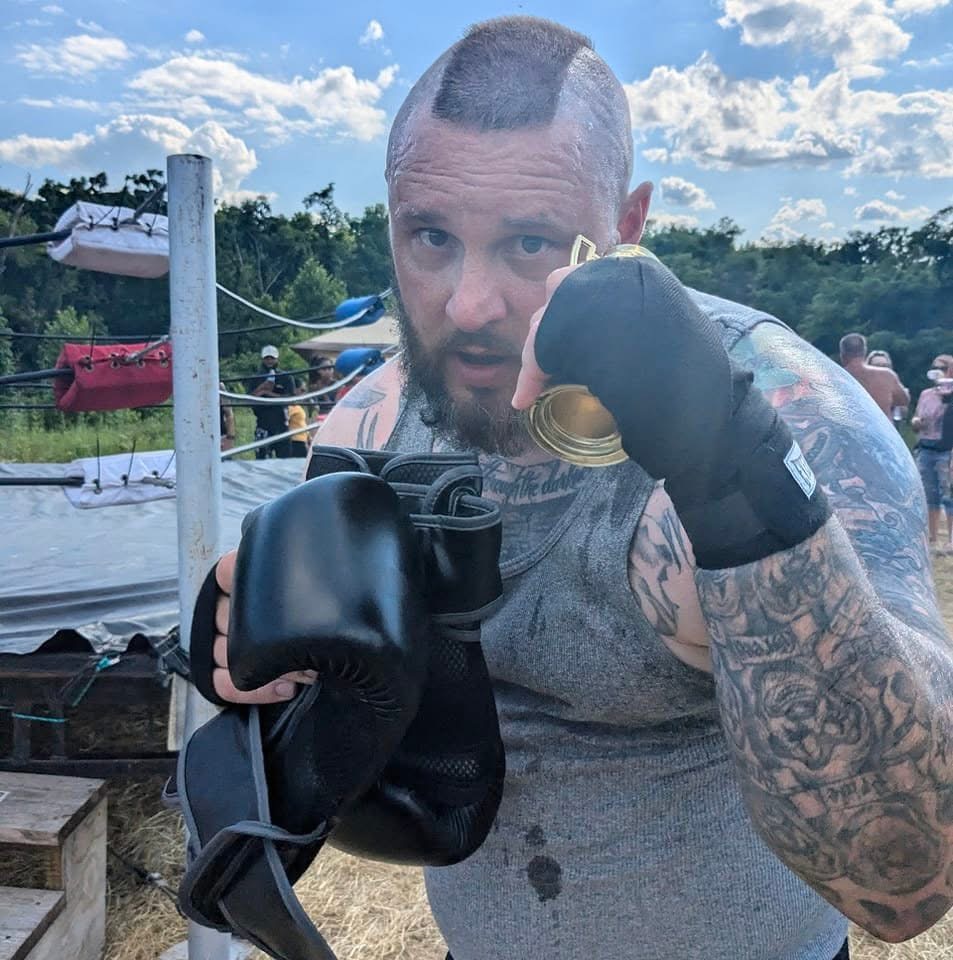 Ziegler is uncertain if he’ll fight again, but he’s not closing the door entirely. It’s tough to get in the ring at the age of 40, says Ziegler, especially after playing football for so many years. “I’m a 40-year-old living in 60-year-old body, but I wouldn’t trade it for anything. I’ve enjoyed every moment of my athletic career,” says Ziegler.
Ziegler is uncertain if he’ll fight again, but he’s not closing the door entirely. It’s tough to get in the ring at the age of 40, says Ziegler, especially after playing football for so many years. “I’m a 40-year-old living in 60-year-old body, but I wouldn’t trade it for anything. I’ve enjoyed every moment of my athletic career,” says Ziegler.
For the past five years, Ziegler has been the mechanical piping field supervisor for Accurate Mechanical, Inc., Lancaster, Ohio, which includes dabbling in mechanical piping and equipment installation—boilers, chillers, air handlers, cooling towers and VRF systems. “My crew and I can do it all,” says Ziegler.
From the Jump
Ziegler has always been a part of the trades, as long as he can remember. “My grandfather and my father were both involved in the trades; my father was a brick, block and stone mason, so I was introduced to the labor force at the ripe old age of five. I can remember tagging along with dad on side jobs and him putting me to work mixing mortar,” recalls Ziegler.
From an early age, Ziegler’s grandfather and father taught him what it meant to work for the things you want in life. “They shaped me into a man, and I didn’t even realize they were doing so,” says Ziegler.
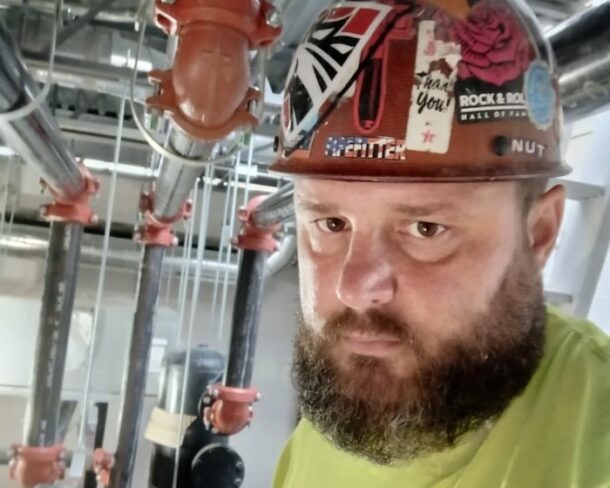
As a young adult, Ziegler worked a few different trades after his college football career ended. He worked in concrete, masonry, and demolition before, what he says, “stumbled upon plumbing.”
“I was laid off from my demolition job where I was making I measly $10 an hour so I talked to a buddy who was in a plumbing apprenticeship and he said the company was looking for new apprentices. So, I signed up, and the rest is history,” says Ziegler.
That history was defined by his journey into plumbing and pipefitting nearly 16 years ago. “Within those 16 years I’ve worked my way through the trenches and into a good role as the field supervisor where I over see a crew of 10 pipefitters,” says Ziegler.

He began as a plumbing apprentice in 2008 and graduated from the Association of Plumbing and Hydronic Contractors (APHC) apprenticeship program in Central Ohio in 2012 near the top of his class. Although, Ziegler says he found out quickly he enjoyed working in the HVAC industry more than the plumbing industry. “I started my HVAC career in 2010 after only two years plumbing. I’ve always been a bigger and stronger guy than most of my co-workers, so I was always put on the jobs where heavier lifting was required. Now I’m in a position near the top of my trade,” says Ziegler.
As a pipefitter, Ziegler’s No. 1 tool will always be a RIDGID pipe wrench. But with the magnitude of some of his jobs—a lot of big commercial, industrial work—Ziegler uses a wide variety of tools, including grooving machines, big hydraulic cutters, thread machines, and his crew uses a lot of rigging tools to set their equipment into place. “Most companies hire sub-contractors to move and set their HVAC equipment, not us we pride ourselves in the fact that we can do a job from start to finish,” says Ziegler.
Ziegler currently is taking college classes to get his business management degree, in hopes to continue his climb to the top of his career.
Paying Homage
Ziegler does want to send a shout out to a few great men that helped develop him into the professional that he is today. The first nod goes to an old man named Dave Boehringer. He was a senior piping foreman that Ziegler worked with for nearly 10 years. “He may be one of the smartest and hardest working men I’ve ever known. Dave taught me what hard work and dedication was all about. He had a way to reach out and pull the young apprentices in, and he was great teacher of the trade. I was blessed to have a foreman like him in my early years,” says Ziegler.

The next gentleman is Andy Jacobs. He took a chance on a young man that didn’t know which direction was up at the time. Jacobs hired Ziegler, just as he was stepping away from plumbing, as a journeyman pipefitter at a company named Engineering Excellence, a service-based company that specializes in HVAC retrofits. “I learned a lot during my eight years there. I have worked with Andy off and on for nearly 10 years, maybe more. And to this day, he is one of my best buddies,” says Ziegler.
The Younger Generation
Yet, Ziegler sees himself as a role model for people looking to get into the pipefitting trade. He regularly attends career days and talks to the younger generation. He also coached high school football for many years, helping several of his young athletes get into the trades.
“The best thing we can do to attract the youth to the trades is treat them the right way. Remember that they are young and learning something new. Make them feel as if they are wanted and appreciated. That goes along way,” says Ziegler.

In addition, Ziegler’s message to the younger generation trying to get into the trades is to stick with it no matter what. “Times will get tough, the pay sucks starting out, but if you do your best and apply yourself in everything you do, it will all work out in the end. The best thing they can do is listen to those above you,” says Ziegler.
What does Ziegler like the most about his work? The biggest reward Ziegler’s gotten while on a job is someone from another trade complimenting him on his craftsmanship, telling him that something I installed is the best they’ve seen; however, the most challenging things he faces now are completing job on schedule with limited manpower. “I have a great crew, but I would love to be able to clone the guys I have now and double my crew,” says Ziegler.
Work/Life Balance
Ziegler says that it is very important to balance work and life, but often times that’s hard to do. “This may be a better question for my wife,” says Ziegler. His spare time is spent reading—Stephen King novels are his favorite—and helping his wife take care of their 5-acre hobby farm where they raise rabbits, and chickens, ducks, and his five Great Pyrenees dogs that they have rescued over the years. “We are a busy family. I work, go to school, help on the farm, and help raise our two disabled children. So, time is a tough thing to find sometimes,” says Ziegler.
 And, Ziegler tries to keep in the best shape as he can. “Working out and staying in shape helps the mind and body tremendously,” says Ziegler. “I struggle sometimes to stay motivated, but when I’m working out it delivers a peace of mind. It’s always nice to be in some sort of shape while working as a pipefitter. We do a ton of heavy lifting while we are installing.”
And, Ziegler tries to keep in the best shape as he can. “Working out and staying in shape helps the mind and body tremendously,” says Ziegler. “I struggle sometimes to stay motivated, but when I’m working out it delivers a peace of mind. It’s always nice to be in some sort of shape while working as a pipefitter. We do a ton of heavy lifting while we are installing.”
At the end of the day, it’s that balance that helps him enjoy the good life. “When I wake up in the morning, I always tell myself that today is going to be a great day. No matter what challenges may lay ahead of me. I’m truly blessed to work in a trade that I enjoy. I think I actually enjoyed it more when I was physically doing the work in the field, but I love to be able to teach and help my apprentices grow into productive tradesmen.”

https://vimeo.com/1060897936 Usually, what happens in Vegas, stays in Vegas, well, most of the time. The Mechanical Hub team was in Las Vegas for the IBS/KBIS show. Check out this weekly update with some highlights from the show. This Weekly Update is powered by our partners at Milwaukee Tool Read more
Usually, what happens in Vegas, stays in Vegas, well, most of the time. The Mechanical Hub team was in Las Vegas for the IBS/KBIS show. Check out this weekly update with some highlights from the show.
This Weekly Update is powered by our partners at Milwaukee Tool.

For one lakeside condo, hot water isn’t just a luxury—it’s a necessity. The unit serves dual purposes: a recreational retreat for its owners and a rental property for guests. That means hot water needs to be dependable, ensuring comfort for everyone, every time. When the new owners of the condo purchased the property, one of Read more
For one lakeside condo, hot water isn’t just a luxury—it’s a necessity. The unit serves dual purposes: a recreational retreat for its owners and a rental property for guests. That means hot water needs to be dependable, ensuring comfort for everyone, every time.
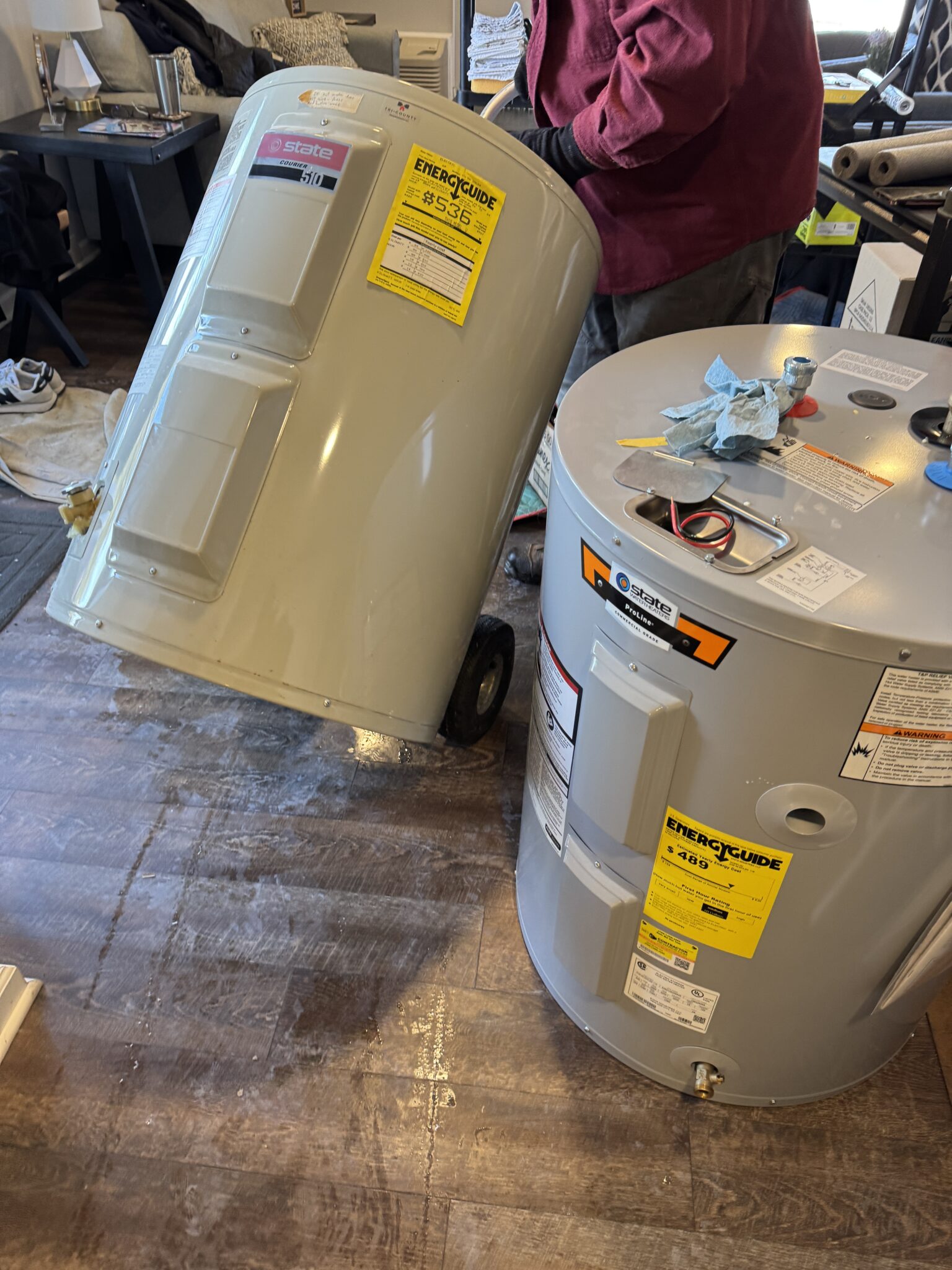 When the new owners of the condo purchased the property, one of the first orders of business was to have a whole-unit inspection prior to completing the transaction. What the inspector found was that while running the water throughout the condo, the water ran hot after only a few minutes of use, making its way for turning the shower into what is essentially known as a cold-water sandwich, and nobody wants to experience that.
When the new owners of the condo purchased the property, one of the first orders of business was to have a whole-unit inspection prior to completing the transaction. What the inspector found was that while running the water throughout the condo, the water ran hot after only a few minutes of use, making its way for turning the shower into what is essentially known as a cold-water sandwich, and nobody wants to experience that.
After further “inspection,” the culprit was a nearly 30-year-old water heater, which—in terms of water heater life—had made a really strong run. But it was time. Time to replace with a similar unit in terms of reliability. “We were so impressed with the longevity and durability of the existing water heater, we decided to swap the unit out with a nearly identical one, with new and improved features,” said the condo owner. “If we can get even similar or even better performance out of the new unit, we’d be extremely happy.”
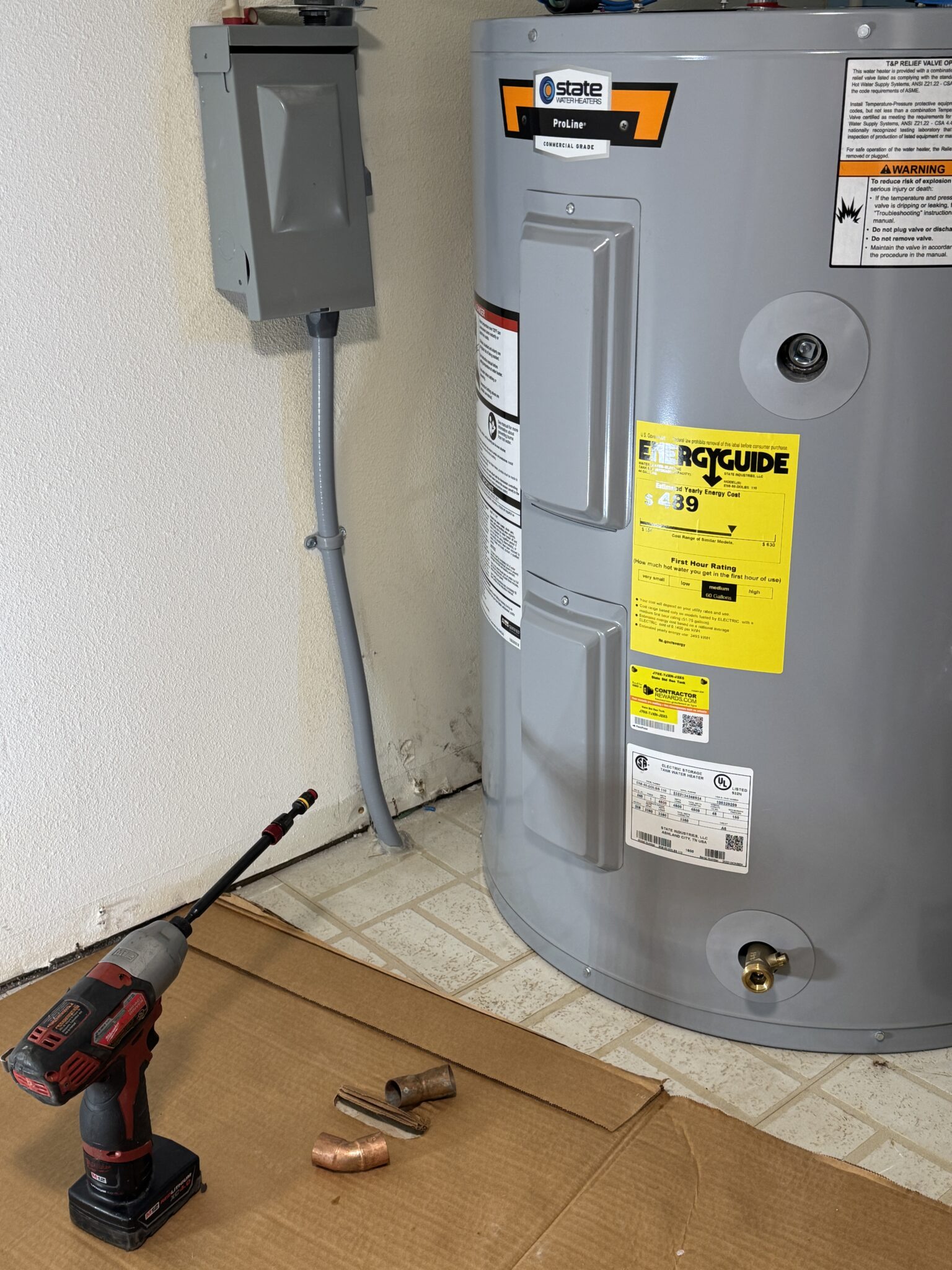 The upgrade included the swap out of an aged State Courier 510 unit with a residential 48-gallon State ProLine Lowboy Electric Water Heater, which is a residential product built to commercial-grade standards, and is only available for purchase through professional wholesalers and contractors.
The upgrade included the swap out of an aged State Courier 510 unit with a residential 48-gallon State ProLine Lowboy Electric Water Heater, which is a residential product built to commercial-grade standards, and is only available for purchase through professional wholesalers and contractors.
As one might imagine, for a one-bedroom condo, space is at a premium, and you guessed it, the mechanical space resides in a small storage closet, which makes it ideal for a low-profile unit with top mount access. Due to the size of the working mechanical space, and because all appliances in the condo run on electric, the choice was simple.
Because the ProLine’s compact lowboy design and top water connections, it was ideal for this tight space. The installation—with a cramped working area and low-height clearance—was seamless for the local plumbing contractor. But the real advantage? The ProLine’s advanced features which include:
- Consistent hot water delivery with a first-hour rating of 60 gallons
- High efficiency with a 0.93 Uniform Energy Factor (UEF) rating
- Commercial-grade durability, featuring a long-lasting lower Incoloy stainless steel element
- State’s industry-leading tank protection, including:
- CoreGard™ stainless steel anode rod
- Blue Diamond® glass lining for corrosion resistance
- DynaClean™ automatic sediment-cleaning system to extend tank life
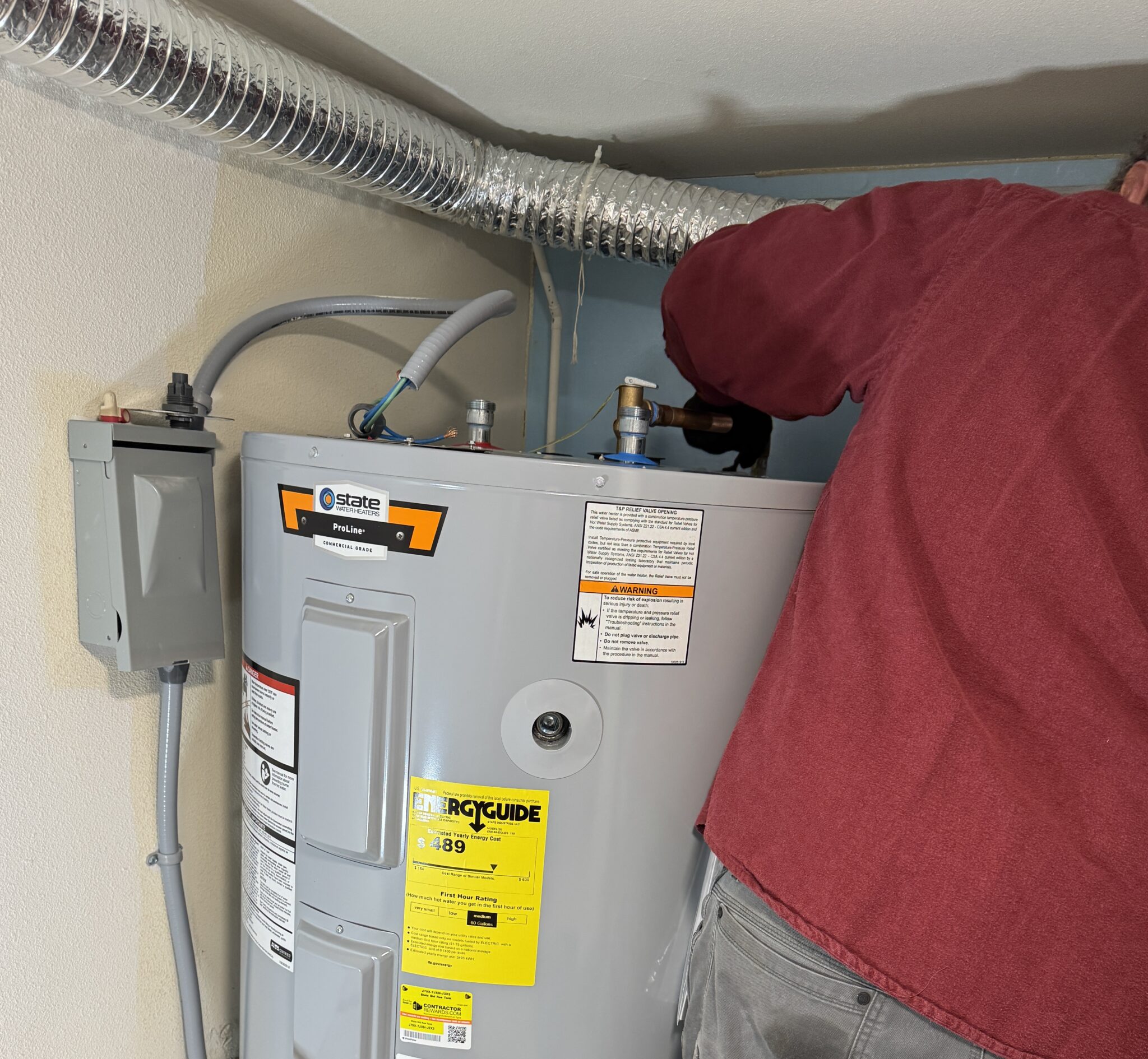
And while the previous State unit lasted for more than a quarter of a century, the condo owners have the peace of mind knowing that with dual 4,500-watt heating elements, the ProLine delivers powerful, reliable hot water—ensuring no more cold-water surprises. And with State’s 6-year limited tank and parts warranty, the condo owners also can rest easy knowing their investment is protected.
Finally, because the residential ProLine unit was a recently swapped in, the condo owners have had somewhat limited use, but are extremely satisfied with the hot water production. The owners are confident in the ProLine—in the end, it was the reliable choice when looking to maximize hot water output while seeking energy savings. “We’ve used it multiple times, and BOOM! There is no better feeling knowing that we, and our renters, will have consistent hot water and comfort while bathing or showering,” said the condo owner.

https://vimeo.com/1058459926 Welcome back everyone, we are in the midst of our busy traveling schedule, just returning from the WWETT Show in Indy. We’ll check in from the show with some highlights from our friends from Milwaukee Tool and General Pipe Cleaners. We’ll also visit with Dan Foley, the most recent recipient of the Carlson/Holohan Industry Read more
Welcome back everyone, we are in the midst of our busy traveling schedule, just returning from the WWETT Show in Indy. We’ll check in from the show with some highlights from our friends from Milwaukee Tool and General Pipe Cleaners. We’ll also visit with Dan Foley, the most recent recipient of the Carlson/Holohan Industry Award of Excellence.
This Weekly Update is powered by our partners at Milwaukee Tool.
